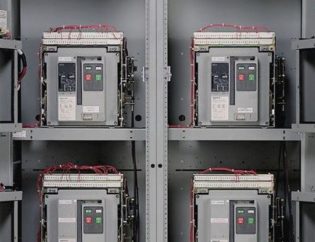Understanding Dual Power Source Transfer Switches:
Dual power source transfer switches are devices that facilitate the transfer of electrical loads between two power sources. They are designed to automatically detect power source failures and switch to the backup source without interruption. These switches ensure a smooth transition between primary and backup power, reducing downtime and providing continuous power supply to critical equipment and systems. There are different types of dual power source transfer switches available, including manual, automatic, and static switches, each with its own advantages and applications.
Enhanced Reliability and Redundancy:
One of the primary benefits of dual power source transfer switches is the increased reliability they offer. By utilizing two power sources, the system becomes less susceptible to single-source failures. In the event of a power outage or failure in the primary source, the transfer switch seamlessly switches to the backup source, providing uninterrupted power supply. This redundancy is crucial for critical applications where even a momentary power loss can have severe consequences, such as data loss, equipment damage, or disruption to essential services.
Flexibility and Load Balancing:
Dual power source transfer switches provide flexibility in selecting and utilizing multiple power sources. This flexibility enables businesses to leverage different power sources, such as utility power, generators, or renewable energy systems, based on availability, cost-effectiveness, or environmental considerations. Additionally, dual power source transfer switches offer load balancing capabilities, distributing the electrical load between the primary and backup sources. Load balancing helps optimize power usage, reduces strain on individual power sources, and ensures efficient utilization of resources.
Seamless Transfer and Transition:
One of the key advantages of dual power source transfer switches is their ability to provide a seamless transfer and transition between power sources. When a power outage occurs, the switch automatically detects the failure and initiates the transfer to the backup source. This automated process eliminates the need for manual intervention, reducing the risk of human error and ensuring a swift and reliable transition. With a well-designed dual power source transfer switch, the transfer can happen within milliseconds, minimizing any interruption or disruption to critical operations.
Scalability and Future Expansion:
Dual power source transfer switches offer scalability options for businesses that anticipate future growth or increased power demands. These switches can accommodate additional power sources or higher capacity power sources as the need arises. By investing in a dual power source transfer switch, businesses can save costs in the long run by avoiding the need to replace the switch when expanding their power infrastructure. This scalability feature makes dual power source transfer switches a cost-effective solution for companies looking to future-proof their power systems.
Enhanced Power Quality and Stability:
Dual power source transfer switches contribute to improved power quality and stability. Voltage fluctuations and power disturbances can have detrimental effects on sensitive equipment and critical processes. With dual power sources in place, power quality can be maintained within acceptable limits, reducing the risk of voltage sags, surges, or frequency variations. This stability ensures the smooth operation of equipment and systems, preserving the integrity of data, preventing equipment damage, and minimizing costly downtime.
Cost Savings and Energy Efficiency:
While the initial investment in dual power source transfer switches may be higher than single-source systems, they offer long-term cost savings and energy efficiency benefits. By leveraging multiple power sources, businesses can optimize power usage, ensuring that the most efficient and cost-effective source is utilized at any given time. Load balancing capabilities further enhance energy efficiency by distributing the load evenly across the power sources. Additionally, the redundancy provided by dual power source transfer switches reduces the risk of financial losses associated with downtime, equipment damage, or interrupted services.
Application Areas and Use Cases:
Dual power source transfer switches find applications in various industries and critical infrastructure. They are commonly employed in data centers and IT infrastructure, where uninterrupted power supply is essential for server racks, networking equipment, and data storage systems. Healthcare facilities rely on dual power source transfer switches to ensure uninterrupted power to critical medical equipment and life-saving devices. Manufacturing plants and industrial processes benefit from the reliability and redundancy of these switches to maintain productivity and prevent production losses. Telecommunication networks and service providers utilize dual power source transfer switches to ensure continuous connectivity and communication services. Commercial buildings and retail spaces can also leverage dual power source transfer switches to ensure uninterrupted power to essential systems like elevators, security systems, and lighting.
Considerations for Implementing Dual Power Source Transfer Switches:
Implementing dual power source transfer switches requires careful consideration of load assessment and power source compatibility. It is important to assess the electrical load requirements and determine the appropriate capacity for the power sources and transfer switch. Proper installation and system integration are critical to ensure seamless operation and adherence to safety standards. Regular maintenance and monitoring are essential to identify and address any issues promptly. Compliance with electrical codes and regulations specific to the region should be followed to ensure the safety and reliability of the system.
Conclusion:
Dual power source transfer switches offer numerous benefits for critical applications that require uninterrupted power supply. Their enhanced reliability, flexibility, load balancing capabilities, seamless transfer, and scalability make them a preferred choice for businesses across various industries. By ensuring continuous power supply, dual power source transfer switches minimize downtime, protect critical equipment, and maintain productivity. Investing in dual power source transfer switches provides a robust and efficient power infrastructure, offering peace of mind and reliability in times of power outages or failures.


